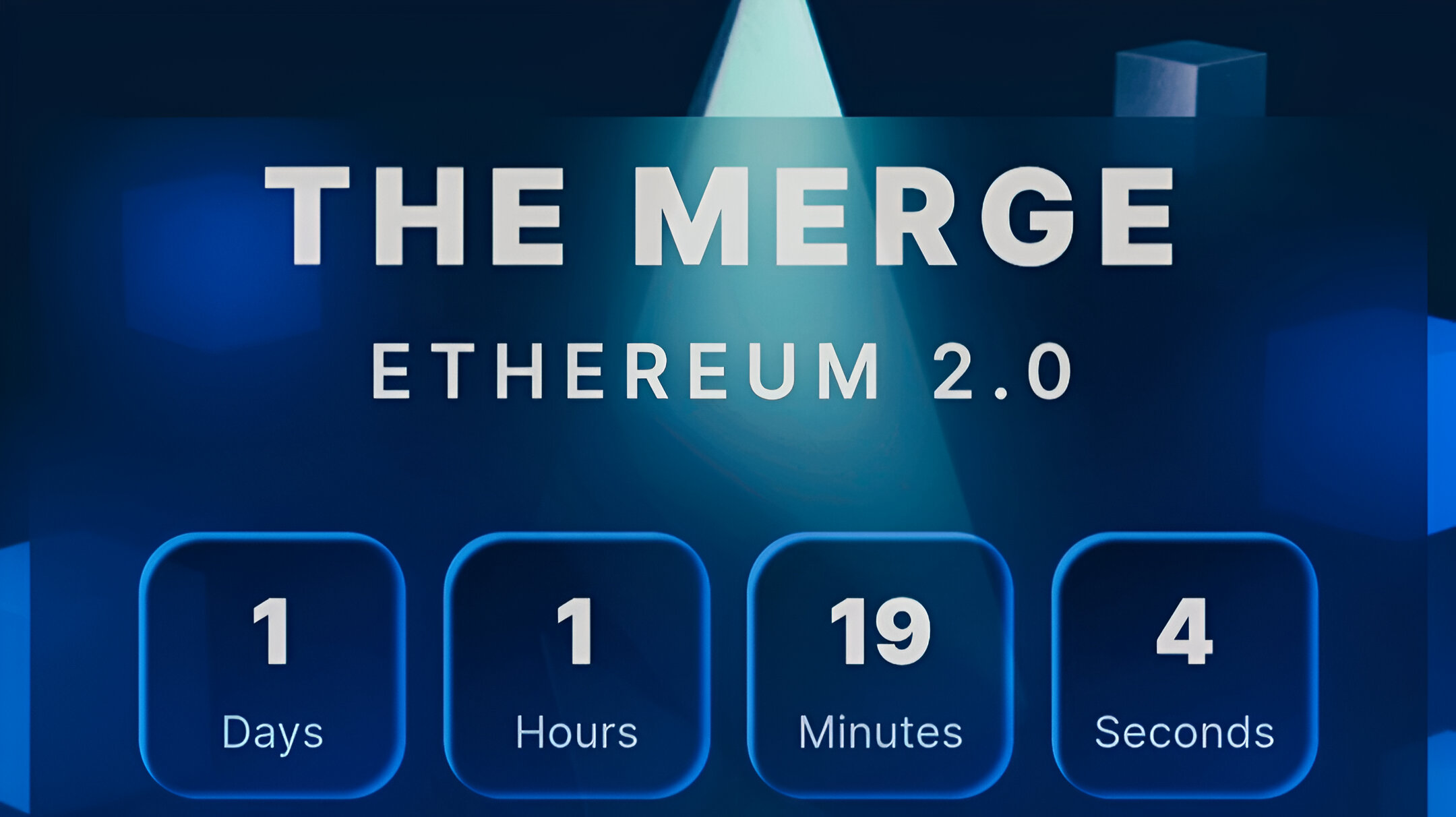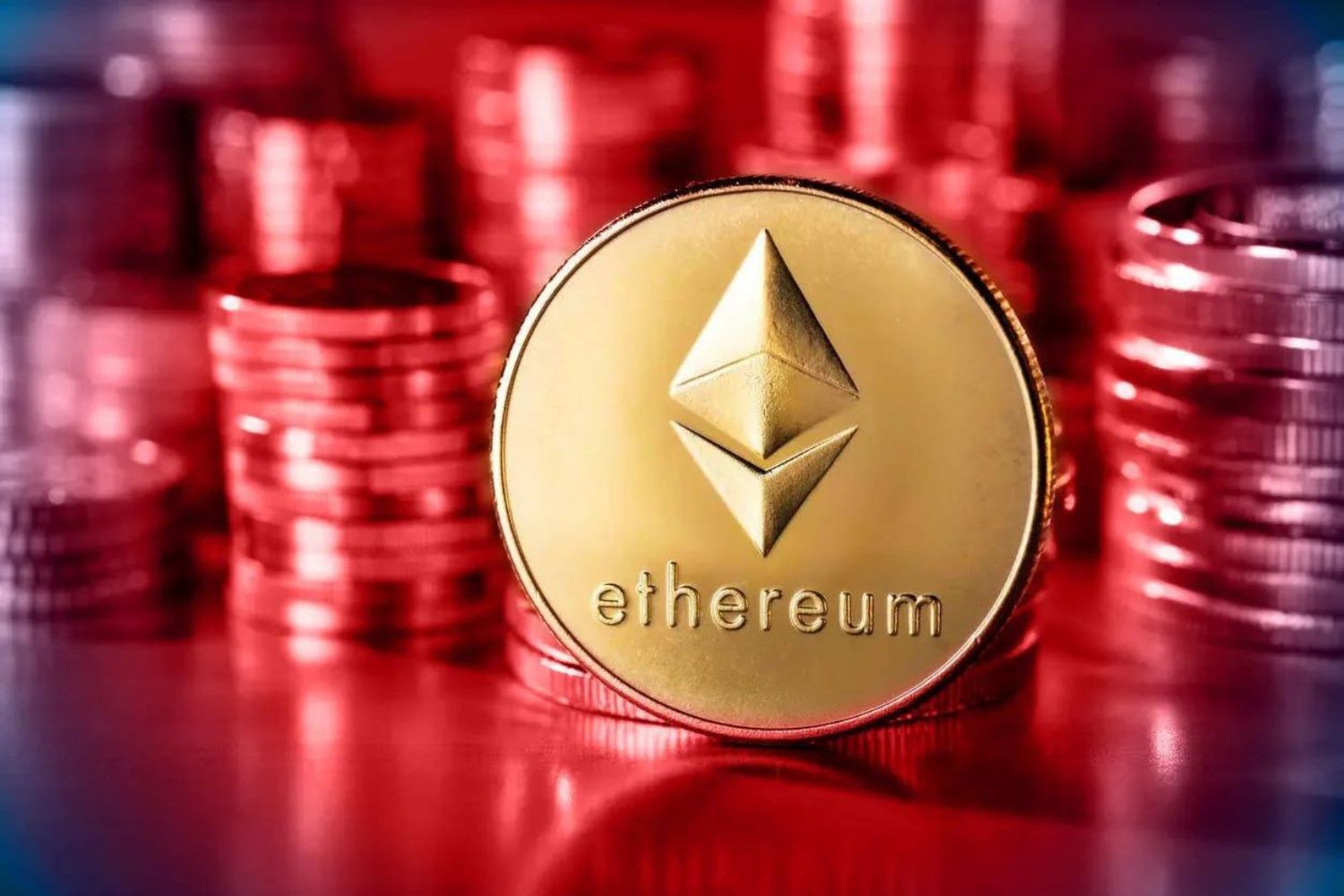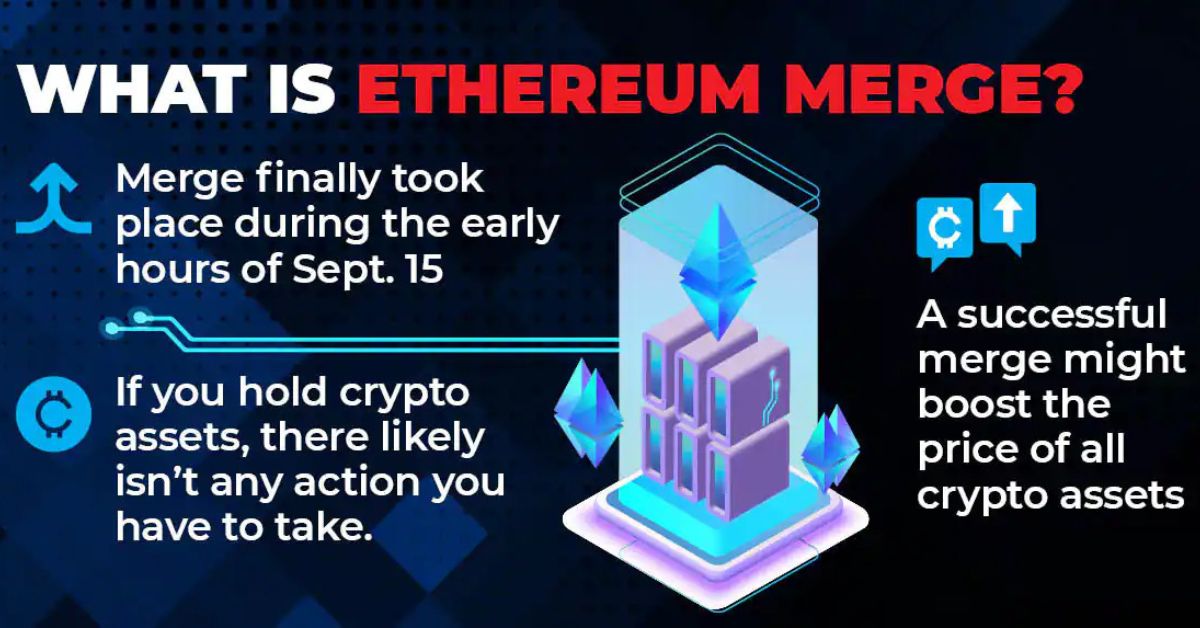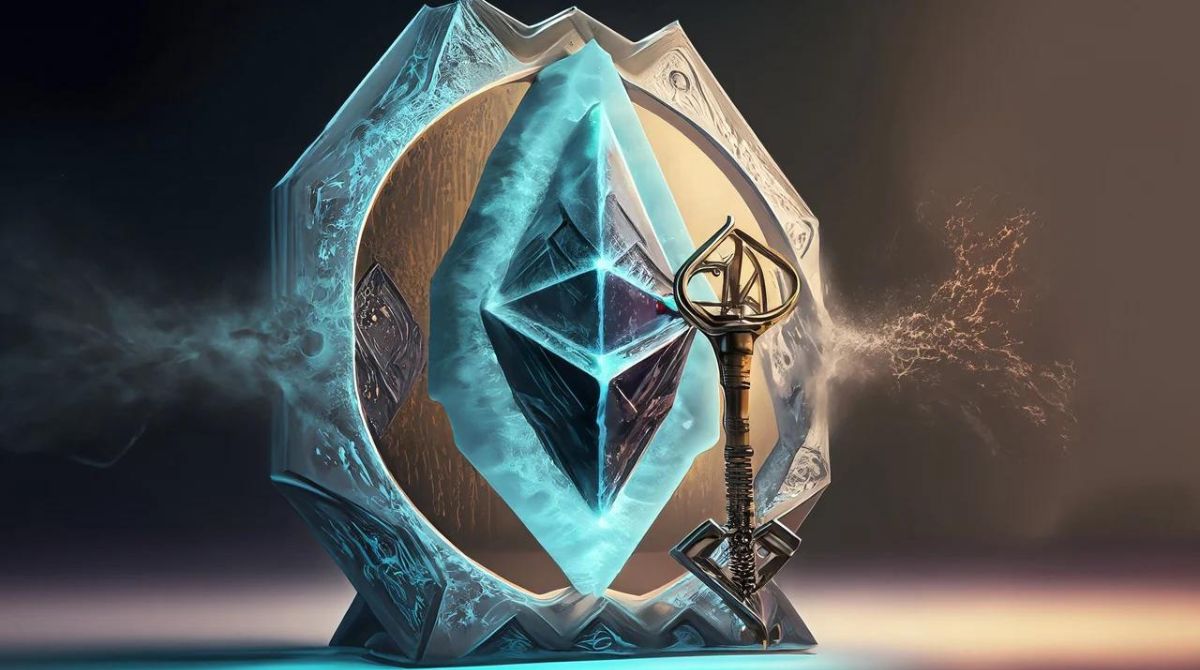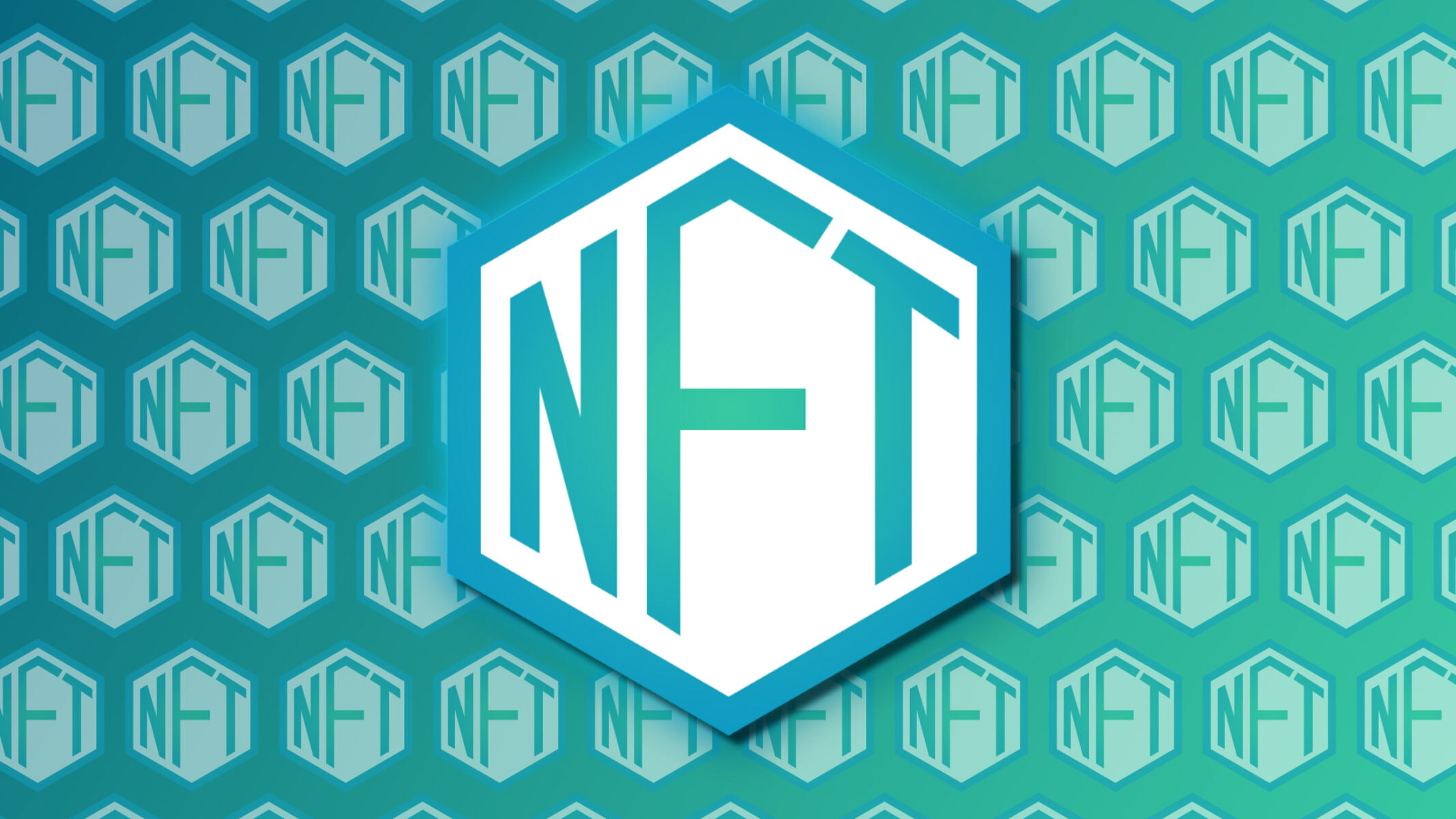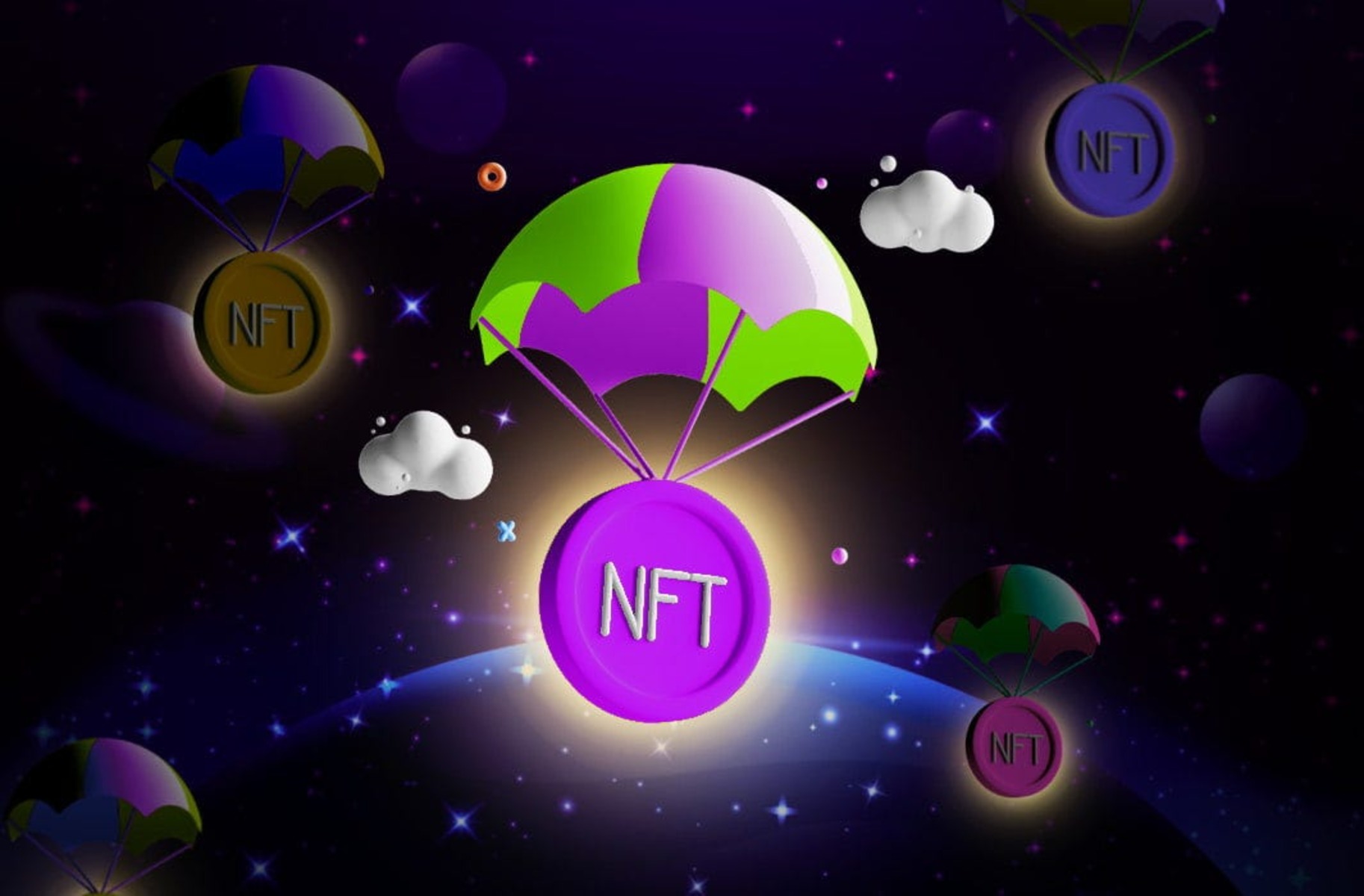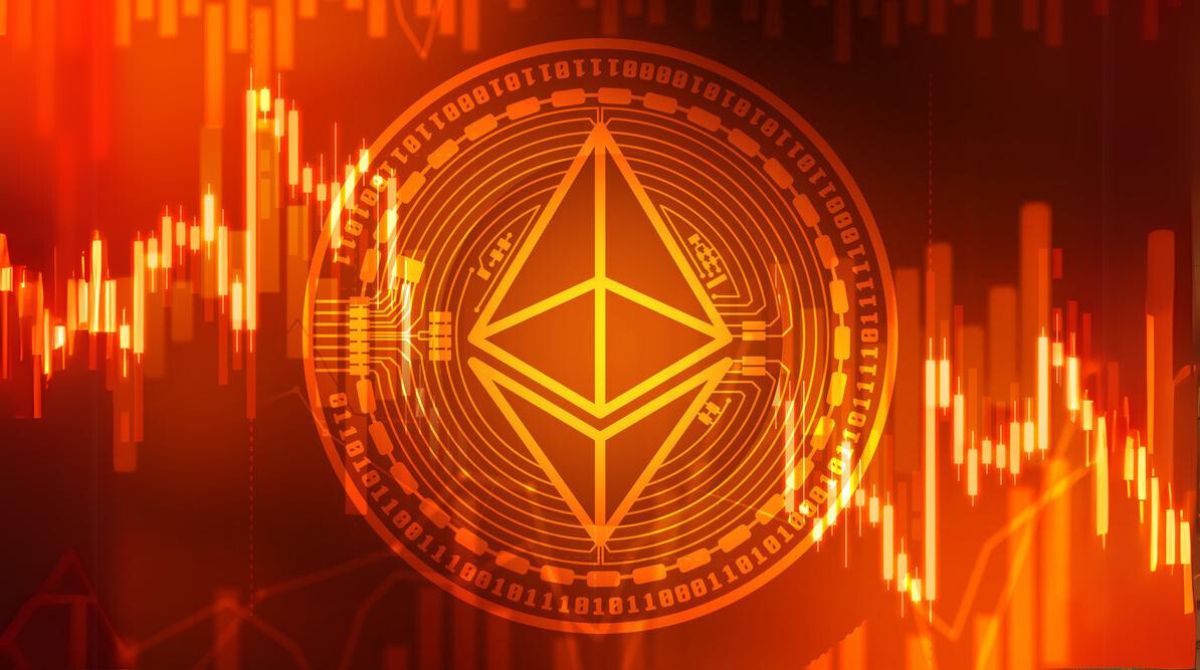Introduction
Welcome to the exciting world of cryptocurrency! As the digital landscape continues to evolve, there is one blockchain project that has captured the attention of investors and tech enthusiasts alike – Ethereum. With its decentralized platform and smart contract capabilities, Ethereum has revolutionized the way we think about applications and financial transactions.
But what does the future hold for this groundbreaking network? In this article, we will dive into the upcoming merge of Ethereum, which marks a pivotal moment in its development. The merge is set to bring about significant changes and open up new opportunities for users and developers.
Before we delve into the specifics of the merge, let’s briefly recap what the Ethereum network is all about.
Ethereum is a blockchain-based platform that allows developers to build and deploy decentralized applications (DApps) and smart contracts. What sets Ethereum apart is its ability to execute code automatically without the need for intermediaries, making it a powerful tool for creating trustless applications and enabling new business models.
Since its launch in 2015, Ethereum has grown exponentially, attracting a vibrant ecosystem of developers, enthusiasts, and investors. The network is powered by Ether (ETH), its native cryptocurrency, which is used for various purposes, including transaction fees, powering smart contracts, and supporting the network’s security.
However, as with any technology, Ethereum is not without its limitations. One of the most pressing issues is scalability, as the network has struggled with high fees and slow transaction times during periods of high demand.
This is where the concept of the merge comes into play. The merge, also known as Ethereum 2.0, aims to address the scalability and sustainability challenges of the current Ethereum network. It involves transitioning from the existing proof-of-work (PoW) consensus algorithm to a proof-of-stake (PoS) algorithm, known as Ethereum 2.0 or Eth2.
By moving to a PoS consensus mechanism, the merge will significantly improve Ethereum’s scalability, enabling faster and cheaper transactions. It will also reduce the network’s energy consumption, as PoS requires less computational power compared to PoW.
In the next sections, we will explore the benefits of the merge, the countdown leading up to it, and what we can expect during this exciting transition. So, buckle up and get ready for the future of Ethereum!
What Is the Ethereum Network?
Before we dive deeper into the upcoming merge of Ethereum, let’s take a closer look at what the Ethereum network is and how it functions.
Ethereum is an open-source blockchain platform that enables the creation of decentralized applications (DApps) and the execution of smart contracts. At its core, Ethereum is a global, distributed computer network that facilitates peer-to-peer transactions and the development of programmable digital assets.
Unlike traditional financial systems and centralized applications, Ethereum operates on a decentralized model, meaning there is no central authority controlling or governing the network. Instead, Ethereum relies on a vast network of computers, known as nodes, that work together to validate transactions and store the blockchain’s data.
At the heart of the Ethereum network is its native cryptocurrency, Ether (ETH). Ether serves multiple purposes within the ecosystem. Firstly, it acts as a digital currency that can be used for transactions and payments. Secondly, it is required to pay for computational resources within the network, such as executing smart contracts or running decentralized applications.
One of the defining features of Ethereum is its ability to execute smart contracts. Smart contracts are self-executing contracts with predefined rules and conditions encoded within them. Once these conditions are met, the contract is automatically executed without any intermediaries or manual intervention. This opens up a world of possibilities for various applications, including decentralized finance (DeFi), supply chain management, and even digital identity systems.
Ethereum introduced the concept of ERC-20 tokens, which are standardized tokens built on the Ethereum blockchain. These tokens adhere to a set of rules defined in the ERC-20 token standard, making them easily interoperable with other Ethereum-based applications and wallets. ERC-20 tokens have played a significant role in the growth of the token economy, enabling projects to raise funds through initial coin offerings (ICOs) and providing liquidity in decentralized exchanges (DEXs).
However, despite its immense potential, Ethereum faces several challenges. One of the most significant issues is scalability. As the network became more popular, it experienced congestion and high fees during periods of high demand. This hindered its ability to handle a large number of concurrent transactions effectively.
To address these challenges and prepare for the future, the Ethereum community embarked on a journey to upgrade the network. This led to the development of Ethereum 2.0, which includes several key upgrades, including the merge of the Ethereum mainnet from proof-of-work (PoW) to proof-of-stake (PoS) consensus mechanism.
Now that we have a better understanding of the Ethereum network and its challenges, let us explore the upcoming merge and the significant benefits it brings to the ecosystem.
The Upcoming Merge
The merge, also known as Ethereum 2.0, is a highly anticipated upgrade to the Ethereum network that aims to address its scalability and sustainability challenges. At its core, the merge involves transitioning from the existing proof-of-work (PoW) consensus algorithm to a proof-of-stake (PoS) algorithm.
Proof-of-work, the current consensus mechanism used by Ethereum, requires miners to perform complex mathematical calculations to validate transactions and secure the network. While PoW has proven to be effective, it has limitations in terms of scalability, energy consumption, and security vulnerabilities.
Proof-of-stake, on the other hand, introduces a new way to secure the network by allowing participants to “stake” their cryptocurrency holdings as collateral. In the PoS system, validators are selected to create and validate new blocks based on the amount of cryptocurrency they hold and are willing to “stake” as collateral. This eliminates the need for resource-intensive mining and significantly reduces energy consumption.
The merge will mark a significant shift in the Ethereum network’s structure and dynamics. Instead of miners, Ethereum will rely on validators who hold and stake Ether to maintain the network’s security and validate transactions. Validators will be responsible for proposing and attesting to new blocks, and a unique algorithm will select them based on their stake and reputation within the network.
One of the main goals of the merge is to improve the network’s scalability. Ethereum 2.0 will introduce shard chains that will run in parallel, allowing multiple transactions to occur simultaneously. This will increase the network’s capacity and significantly reduce congestion and transaction fees. With improved scalability, Ethereum will be better equipped to handle high demand and support a wide range of decentralized applications and use cases.
Another benefit of the merge is improved energy efficiency. The transition from PoW to PoS will reduce the energy consumption of the Ethereum network by orders of magnitude. This is a crucial step forward in making blockchain technology more environmentally friendly and sustainable.
Additionally, the merge will enhance the overall user experience by reducing transaction confirmation times. With the PoS consensus mechanism, block finality is significantly faster, allowing for quicker settlement of transactions and improved user satisfaction. This is particularly important for applications such as decentralized finance (DeFi), where speed and efficiency are paramount.
The upcoming merge is not just a technical upgrade; it represents a turning point for Ethereum and the entire cryptocurrency ecosystem. The shift to PoS introduces new opportunities and incentives for individuals to actively participate in securing the network and earn rewards by staking their Ether. This increased participation will foster a more decentralized and robust ecosystem, promoting a stronger sense of community and ownership among Ethereum stakeholders.
Now that we understand the significance of the upcoming merge, let’s explore the countdown leading up to this milestone and what we can expect during the transition phase.
Benefits of the Merge
The upcoming merge of Ethereum brings forth a wide range of benefits that will have a profound impact on the network and its users. Let’s explore some of the key advantages of this exciting upgrade.
1. Enhanced Scalability: The merge to Ethereum 2.0 introduces shard chains, allowing the network to process transactions in parallel. This enables a significant increase in scalability, with the potential to handle thousands of transactions per second. As a result, Ethereum will be better equipped to support the growing demand for decentralized applications (DApps) and accommodate a larger user base.
2. Reduced Transaction Fees: The improved scalability of Ethereum 2.0 will alleviate network congestion and reduce transaction fees. Users will benefit from lower costs when executing smart contracts, transferring assets, and participating in decentralized finance (DeFi) protocols. This opens up new opportunities for individuals and businesses to leverage Ethereum’s capabilities without being hindered by high fees.
3. Energy Efficiency: The transition from proof-of-work (PoW) to proof-of-stake (PoS) consensus mechanism dramatically reduces the energy consumption of the Ethereum network. PoS requires significantly less computational power, eliminating the need for resource-intensive mining. This is a major step towards achieving a more sustainable and environmentally friendly blockchain ecosystem.
4. Faster Transaction Confirmation: Ethereum 2.0 will offer faster transaction finality, meaning that once a transaction is included in a block, it is considered final and cannot be reversed. This reduces the waiting time for confirmation and enhances the user experience, especially for time-sensitive applications such as online gaming, decentralized exchanges (DEXs), and other real-time interactions.
5. Increased Security: The merge to Ethereum 2.0 strengthens the network’s security by incentivizing individuals to become validators and actively participate in securing the blockchain. Validators will be required to lock up a certain amount of Ether as collateral, creating a financial stake in the network’s integrity. This makes it economically unviable for validators to engage in malicious activities, creating a more robust and secure decentralized system.
6. Community Engagement and Governance: Ethereum 2.0 encourages active participation from the community by allowing individuals to become validators and earn rewards for their contribution. This incentivizes stakeholders to take an active role in securing the network and participating in its governance. Ethereum’s merge emphasizes decentralization and community involvement, fostering a stronger sense of ownership and collaboration among network participants.
Overall, the merge to Ethereum 2.0 brings numerous benefits that bolster the network’s scalability, energy efficiency, transaction speed, security, and community engagement. This upgrade positions Ethereum as a more capable and sustainable platform, poised to drive innovation and shape the future of decentralized applications and blockchain technology as a whole.
Now that we understand the benefits of the merge, let’s explore the countdown leading up to this significant upgrade and what to expect during the transition phase.
The Countdown Begins
Excitement is building within the Ethereum community as the countdown to the merge begins. This highly anticipated event marks a significant milestone in the evolution of the Ethereum network. But what does the countdown entail, and what can we expect in the coming months?
The countdown to the merge officially starts with the launch of the Beacon Chain, which serves as the backbone of Ethereum 2.0. The Beacon Chain went live on December 1, 2020, and introduced the proof-of-stake (PoS) consensus mechanism to the Ethereum ecosystem. Since then, it has been running smoothly, validating transactions and securing the Ethereum 2.0 network.
With the Beacon Chain up and running, attention now turns to the next crucial step in the merge process—the integration of the Ethereum mainnet with the Beacon Chain. This phase, commonly referred to as the “dock,” will bring the proof-of-work (PoW) Ethereum chain to an end and unite it with the proof-of-stake (PoS) Beacon Chain.
While an exact timeline for the merge has not been finalized, it is expected to take place in the coming months. The Ethereum community, including developers, validators, and the broader ecosystem, is eagerly preparing for this monumental event.
During the countdown, there are several key activities and milestones to watch for:
- Security Audits: As the merge involves significant changes to the Ethereum network, security audits play a vital role in ensuring a smooth and secure transition. Independent auditors thoroughly review the code, identifying and addressing any potential vulnerabilities before the merge takes place.
- Testnets: Test networks, such as “Medalla” and “Pyrmont,” will continue to serve as testing grounds for Ethereum 2.0. Testnets allow developers and validators to experiment with Beacon Chain functionality, validate their setups, and gain valuable experience for the mainnet merge.
- Client Compatibility: Ethereum clients, including Geth, Prysm, Lighthouse, and others, are actively working on updates to ensure compatibility with Ethereum 2.0. These updates are vital to facilitate the smooth integration of the Ethereum mainnet with the Beacon Chain.
- Validator Activation: As the merge approaches, individuals interested in becoming validators can start preparing for their participation in securing the network. Validators will be required to lock up a certain amount of Ether as collateral and set up the necessary infrastructure to validate transactions.
Throughout the countdown, it’s crucial to stay informed and engaged with the Ethereum community. Regular updates and announcements from the Ethereum Foundation, core developers, and client teams will provide insights into the progress and readiness for the merge.
As the merge draws near, the Ethereum ecosystem will undergo significant changes that will shape the future of the network. It is an opportune time for developers and enthusiasts to explore Ethereum 2.0, get involved in test networks, and contribute to the ongoing development of the ecosystem.
With each passing day, the excitement and anticipation surrounding the merge continue to grow. The combination of improved scalability, enhanced security, and energy efficiency through Ethereum 2.0 promises to unlock new possibilities and take the Ethereum network to new heights.
Now that we understand the countdown process, let’s explore the steps individuals can take to prepare for the merge and ensure a smooth transition to Ethereum 2.0.
What to Expect During the Countdown
The countdown to the merge of Ethereum 2.0 is an exciting time filled with anticipation and preparation. During this phase, there are several key aspects to be aware of and expectations to keep in mind. Let’s explore what you can expect during the countdown to the merge.
1. Security Audits and Updates: As the merge involves significant changes to the Ethereum network, security audits are an integral part of the process. Expect ongoing security assessments and updates to ensure a robust and secure transition. It is essential to keep track of these updates to stay informed and address any potential vulnerabilities.
2. Testnets and Validator Activity: Test networks, such as Medalla and Pyrmont, will continue to serve as valuable platforms for developers and validators to test Ethereum 2.0 functionality. Expect continued activity and participation in these testnets as the merge approaches. Validators will have the opportunity to fine-tune their setups, gain experience, and familiarize themselves with the validator role.
3. Client Compatibility: Ethereum clients, including Geth, Prysm, Lighthouse, and others, will release updates to ensure compatibility with Ethereum 2.0. These updates are vital for a seamless integration of the Ethereum mainnet with the Beacon Chain. Expect regular updates and announcements from client teams and stay tuned for instructions on upgrading your client to the latest version.
4. Validator Onboarding: As the merge approaches, individuals interested in becoming validators can start preparing for their participation. Validators will be required to lock up a certain amount of Ether as collateral and meet the necessary technical requirements. Expect educational resources and guides to help you navigate the validator onboarding process and ensure readiness for the merge.
5. Community Engagements: Throughout the countdown, the Ethereum community will remain active and engaged. Expect lively discussions, knowledge sharing, and collaborative efforts from developers, validators, and enthusiasts. Participate in forums, community channels, and social media platforms to stay connected, ask questions, share insights, and contribute to the ongoing development of Ethereum.
6. Communication and Updates: Regular updates and announcements from the Ethereum Foundation, core developers, and client teams will be key sources of information during the countdown. Expect important communication regarding milestones, progress, and any changes or adjustments to the merge timeline. Stay tuned to official communication channels to ensure you have the latest information.
As the countdown progresses, it’s crucial to stay informed, maintain an open mindset, and be adaptable. The merge represents a significant transition for the Ethereum network, and there may be unexpected developments or adjustments along the way. Embrace the opportunity to learn, collaborate, and contribute to the Ethereum ecosystem during this exciting phase.
By managing your expectations and actively participating in the countdown process, you can prepare yourself for the merge and position yourself to make the most of the benefits and opportunities that Ethereum 2.0 will bring.
Now that we have a sense of what to expect during the countdown, let’s explore the steps you can take to prepare for the merge and ensure a smooth transition to Ethereum 2.0.
Preparing for the Merge
As the merge of Ethereum 2.0 draws nearer, it’s essential to start preparing for this significant upgrade. Whether you are a developer, a validator, or an Ethereum enthusiast, there are steps you can take to ensure a smooth transition to Ethereum 2.0. Here is a guide to help you prepare for the merge.
1. Educate Yourself: Start by familiarizing yourself with Ethereum 2.0 and its underlying principles. Understand the basics of proof-of-stake (PoS) consensus, shard chains, and the validator role. Stay updated with the latest resources, articles, and documentation released by the Ethereum Foundation and official Ethereum channels.
2. Stay Informed: Keep a close eye on official announcements and updates related to the merge. Follow the Ethereum Foundation, core developers, and client teams on their communication channels. Join relevant Ethereum communities, forums, and social media platforms to stay connected to the latest discussions and developments.
3. Upgrade Ethereum Clients: Ensure that you are using the latest version of your chosen Ethereum client. Regularly check for client updates and follow the instructions provided by the client teams to upgrade your software. Running the most up-to-date client version is crucial for seamless integration with Ethereum 2.0.
4. Become a Validator: If you are interested in becoming a validator in Ethereum 2.0, start preparing for your role. Familiarize yourself with the technical requirements, such as setting up the necessary infrastructure and meeting the minimum staking requirements. Participate in test networks to gain hands-on experience and refine your validator setup.
5. Secure Your Ether: If you plan to become a validator, ensure you have enough Ether to meet the staking requirements. If you are not becoming a validator, make sure to secure your Ether in a wallet that supports the merge. This will ensure you retain control of your funds during the transition.
6. Stay Engaged: Engage with the Ethereum community to stay connected and updated as the merge approaches. Participate in discussions, ask questions, and contribute your knowledge and insights. Sharing experiences and collaborating with like-minded individuals will enhance your understanding and readiness for the merge.
7. Contribute to Ethereum Development: If you have development skills, consider contributing to the Ethereum ecosystem. Open-source projects related to Ethereum development are always in need of support and collaboration. Contributing code, reporting bugs, or providing feedback can make a meaningful impact on the success of the merge.
By taking these steps to prepare for the merge, you can position yourself to fully embrace the benefits and opportunities that Ethereum 2.0 will bring. Whether you choose to become a validator, contribute as a developer, or simply stay engaged as an enthusiast, your active involvement will contribute to the success of the Ethereum ecosystem.
As the merge approaches, continue to monitor updates, announcements, and community discussions. The Ethereum community is vibrant and inclusive, offering ample resources and support for individuals preparing for this major upgrade. Together, we can shape the future of Ethereum and the broader blockchain landscape.
Now that we have explored the steps to prepare for the merge, let’s address some potential challenges along the way and possible solutions to overcome them.
Potential Challenges and Solutions
While the merge to Ethereum 2.0 brings forth exciting possibilities, it also comes with potential challenges. Understanding and addressing these challenges is crucial to ensuring a smooth transition. Let’s explore some of the anticipated challenges and possible solutions.
1. Technical Complexity: The upgrade to Ethereum 2.0 involves significant technical changes and introduces new concepts such as shard chains and proof-of-stake (PoS) consensus. This complexity may pose a challenge for developers and validators. To overcome this, educational resources, documentation, and tutorials should be made readily available to help individuals understand and navigate the technical aspects of Ethereum 2.0. Additionally, fostering a supportive community where participants can collaborate and seek guidance will be instrumental in overcoming technical hurdles.
2. Validator Participation: To ensure the decentralized nature and security of Ethereum 2.0, active participation from validators is crucial. However, the potential challenge lies in encouraging a sufficient number of validators to participate. Adopting effective incentive mechanisms, such as attractive staking rewards or community-driven initiatives, can serve as solutions to incentivize more individuals to become validators and contribute to the security and decentralization of the network.
3. Network Stability and Security: Any major network upgrade carries the risk of instability and potential security vulnerabilities. Extensive testing on testnets, rigorous security audits, and ongoing bug bounty programs can help identify and address any weaknesses or vulnerabilities. Timely updates and patches must be released to ensure a stable and secure environment. Close collaboration between the Ethereum Foundation, core developers, auditors, and the broader community is crucial to maintaining the stability and security of the merged Ethereum network.
4. Community Education and Awareness: A challenge lies in effectively educating and raising awareness within the Ethereum community about the merge and its implications. Ensuring that accurate and accessible information is available across multiple platforms, including official documentation, community forums, and social media, will help address this challenge. Regular communication and engagement with the community through blog posts, webinars, conferences, and Q&A sessions can clarify doubts, create understanding, and foster community support for the merge.
5. Smooth Transition from PoW to PoS: The transition from the proof-of-work (PoW) Ethereum mainnet to the proof-of-stake (PoS) Beacon Chain requires careful coordination. Ensuring that the Beacon Chain is effectively integrated with the Ethereum mainnet, with minimal disruption to existing applications and services, will be a key challenge. Close collaboration between Ethereum developers, client teams, and application developers will be essential to navigate this transition smoothly.
6. Network Upgrade Adoption: Encouraging users of the existing Ethereum mainnet to migrate and adopt Ethereum 2.0 can be a challenge. Creating sufficient incentives, offering clear migration paths, and ensuring backward compatibility for existing applications and smart contracts can drive user adoption. Clear communication about the benefits of Ethereum 2.0, such as improved scalability, reduced fees, and enhanced security, will be vital in encouraging users to embrace the upgrade.
By recognizing and addressing these potential challenges head-on, the Ethereum community can work together to find viable solutions and ensure a successful merge to Ethereum 2.0. The collaborative effort of developers, validators, community members, and stakeholders will pave the way for a resilient and thriving decentralized ecosystem.
Now that we have explored the potential challenges and solutions, let’s dive into some frequently asked questions to provide further clarity on the upcoming merge of Ethereum.
Frequently Asked Questions
As the merge of Ethereum 2.0 approaches, there are some common questions that arise among the community. Here are answers to a few frequently asked questions:
1. What is the timeline for the merge of Ethereum 2.0?
The exact timeline for the merge has not been finalized yet. However, it is expected to occur in the coming months. Regular updates from the Ethereum Foundation and core developers will provide more concrete information as the merge progresses.
2. How can I become a validator in Ethereum 2.0?
To become a validator, you will need to lock up a certain amount of Ether as collateral and meet the technical requirements. Validators play a key role in securing the network and validating transactions. It is important to stay informed and follow the official Ethereum channels for instructions on how to become a validator.
3. Will the upgrade to Ethereum 2.0 impact my current Ethereum holdings?
During the merge, your Ethereum holdings will be preserved, and you will retain control of your funds. The upgrade is designed to be backward-compatible, ensuring a seamless transition from the existing Ethereum mainnet to Ethereum 2.0.
4. Will I be able to continue using my existing Ethereum applications and smart contracts?
Compatibility is a key consideration during the merge. Efforts are being made to ensure that existing Ethereum applications and smart contracts can continue to run without interruption. However, it is advised to stay updated with the latest information and consult the official Ethereum documentation for any specific migration steps or considerations needed for your applications.
5. What are the benefits of Ethereum 2.0?
Ethereum 2.0 brings numerous benefits, including improved scalability, reduced transaction fees, enhanced energy efficiency, faster transaction finality, and increased network security. These improvements open up new possibilities for decentralized applications, enhance user experiences, and promote a more sustainable and inclusive blockchain ecosystem.
6. How can I stay informed about the merge and Ethereum 2.0 updates?
To stay informed, it is recommended to follow the official channels of the Ethereum Foundation, core developers, and client teams. Joining community forums, participating in social media discussions, and subscribing to Ethereum-related newsletters are also effective ways to receive timely updates and stay connected with the community.
Remember that the merge to Ethereum 2.0 is an ongoing process, and new challenges and questions may arise. It’s important to stay engaged, seek accurate information, and contribute to the Ethereum community as it transitions into this exciting chapter of its development.
Now that we have addressed some common questions, let’s conclude with a final thought on the future of Ethereum and the impact of the merge.
Conclusion
The merge of Ethereum 2.0 represents a monumental step forward for the Ethereum network and the broader blockchain ecosystem. As the countdown progresses and the merge approaches, the excitement and anticipation within the Ethereum community continue to grow.
Ethereum 2.0 brings forth a range of benefits, including enhanced scalability, reduced transaction fees, improved energy efficiency, faster transaction finality, and increased network security. These improvements lay the foundation for a more robust, sustainable, and inclusive decentralized ecosystem.
Preparing for the merge involves staying informed, educating oneself about Ethereum 2.0, upgrading Ethereum clients, considering validator participation, and staying actively engaged with the community. By taking these steps, individuals can position themselves to fully embrace the opportunities and benefits of Ethereum 2.0.
While there may be potential challenges along the way, such as technical complexity, validator participation, network stability, and community education, the Ethereum community is well-equipped to address these challenges through collaboration, innovation, and the commitment to the shared goal of a decentralized future.
As the merge draws nearer, let us continue to support the Ethereum ecosystem by participating in testnets, contributing to development efforts, and staying engaged with the community. Together, we can shape the future of Ethereum and pave the way for broader blockchain adoption and innovation.
With each passing day, we move closer to harnessing the full potential of Ethereum 2.0 – a network that is faster, more efficient, and accessible to all. This is an exciting time for Ethereum and for individuals who believe in the power of decentralized technologies to transform our world.
So, let’s embrace the countdown, prepare for the merge, and embark on this journey to build a new era of decentralized applications, smart contracts, and opportunities on the Ethereum network.







